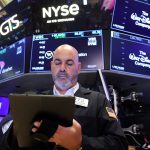In the constantly evolving realm of global finance, the upcoming week stands poised to deliver a flurry of critical events and data releases that will test the nerves of investors and analysts worldwide. From key economic indicators to central bank decisions and geopolitical developments, the market’s sensitivity to policy shifts has never been more pronounced. This intricate web of factors underscores how deeply interconnected global markets are, where a single move by a major player can ripple across continents, reshaping risk appetites and investment strategies almost instantaneously.
At the forefront of attention is the United States jobs report—an economic litmus test that reveals much about the labor market’s vitality and the broader health of the American economy. With inflation concerns and recession fears lingering over the Federal Reserve’s decision-making, employment data will be scrutinized for clues on wage growth, unemployment trends, and job creation momentum. A robust report could bolster the Fed’s hawkish stance, possibly signaling more rate hikes to tame inflation. Conversely, weaker-than-expected numbers may amplify uncertainty surrounding the economic rebound, potentially making the Fed rethink the pace of tightening. Alongside the U.S., eyes will be sharply focused on the European Central Bank’s upcoming policy meeting. Markets widely expect the ECB to enact another interest rate cut—the eighth in a series—to energize the eurozone’s sluggish economy grappling with modest inflation and tepid growth. Whether this cut marks a temporary pause or the start of a deeper shift toward easing monetary policy remains a pivotal question for currency markets and investor confidence in European assets.
Trade tensions continue to cast a persistent shadow over global market dynamics. The ongoing verbal and tariff battles between the U.S. and China inject volatility and unpredictability, complicating global supply chains and investor sentiment alike. China’s forthcoming trade data will be instrumental in assessing the real-time impact of tariffs and gauging the durability of its export-driven growth model. Meanwhile, inflation reports from emerging Asian economies will shed light on region-specific pressures and influence local monetary policies. Australia’s first-quarter growth figures also warrant attention, offering insight into how fluctuating commodity prices, domestic spending, and external conditions interplay in shaping one of the Asia-Pacific’s key economies.
Beyond the numbers and policies, political shifts in various countries add another layer of complexity to the global market landscape. Elections in Australia, Singapore, and Romania carry the potential to recalibrate fiscal policies and trade relations, directly influencing sectoral performance from natural resources to technology. Such political developments are far from isolated events; they form part of a broader mosaic that shapes investor sentiment and reallocates capital flows. Moreover, contrasting monetary policy approaches in emerging markets—from Brazil’s flirtation with interest rate hikes to Poland’s contemplation of rate cuts—highlight the balancing act between controlling inflation and fostering growth. This patchwork of economic strategies presents a navigational challenge for global investors who must adapt quickly to varying conditions across regions.
Corporate earnings reports add yet another dimension to the unfolding story. The performance of influential companies across multiple sectors serves as a real-time indicator of how businesses are coping with macroeconomic headwinds—including inflationary pressures, supply chain disruptions, and shifting consumer demands. Earnings surprises, whether positive or negative, often trigger sharp market moves, reflecting the resilience or vulnerability of individual firms within the broader economic context. This interplay between corporate results and macroeconomic data offers investors crucial clues about which sectors are poised to outperform or lag in the current cycle.
Taken together, the coming week paints a vivid tableau of a global market at a crossroads, where the U.S. jobs report, monetary policy decisions from major central banks, trade and tariff developments, political elections, and corporate earnings all converge to influence market sentiment and economic outlook. Investors must remain nimble, ready to recalibrate their expectations in response to swift, sometimes unexpected, shifts. In a landscape where policy reverberations span continents almost instantaneously, these developments will serve as a critical litmus test for both market stability and the trajectory of global growth.
Ultimately, the dense schedule of economic data, geopolitical events, and corporate earnings expected this week reflects not only the complexity but also the dynamism of today’s interconnected financial system. Central themes—ranging from the U.S. labor market and ECB interest rate moves to Chinese trade figures amidst tariff turmoil, and political transformations in key emerging markets—will dominate the investment discourse. As these diverse yet intertwined forces play out, market participants will diligently parse every signal to refine their forecasts for growth, inflation, and risk, reinforcing the reality that in global finance, no event exists in isolation and every move can set off a chain reaction felt around the world.







